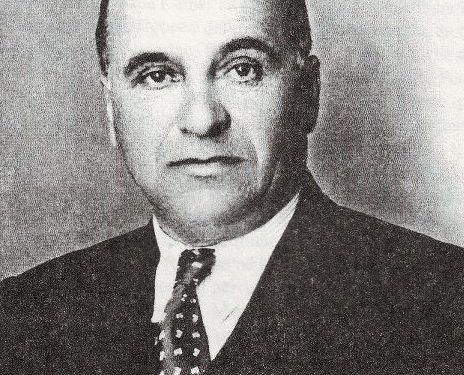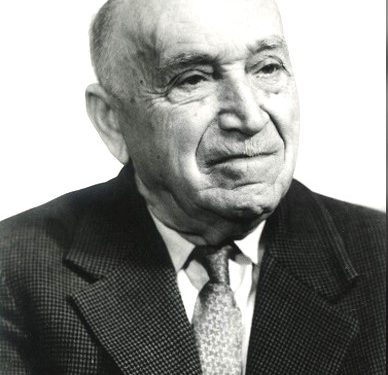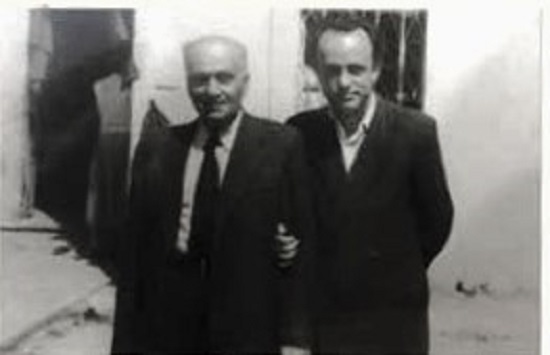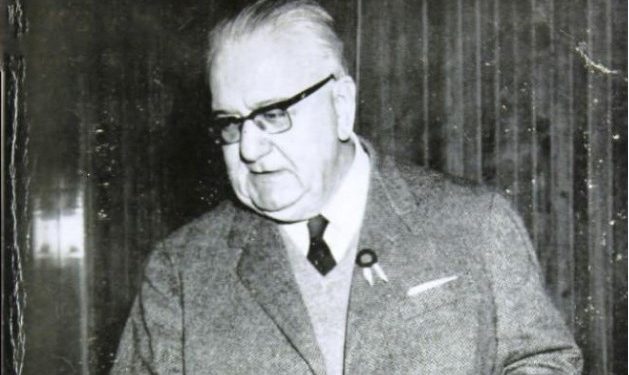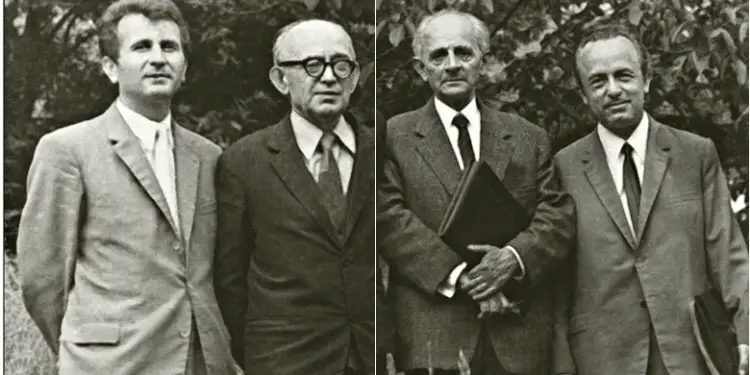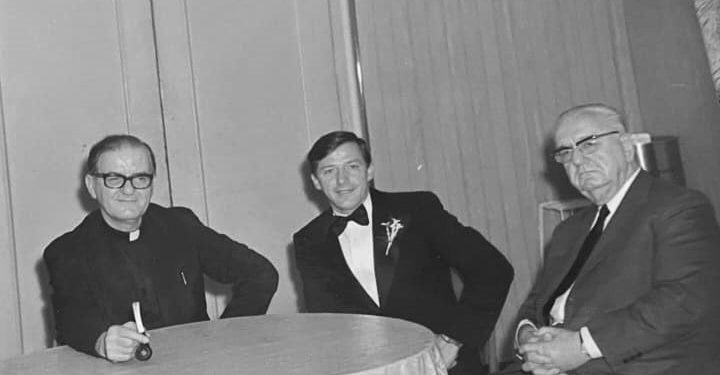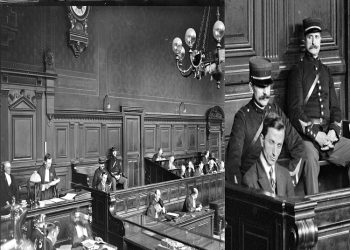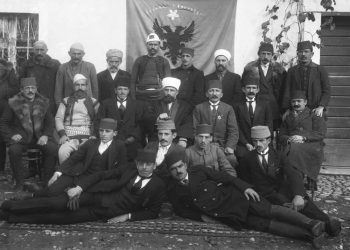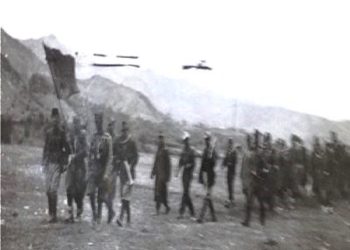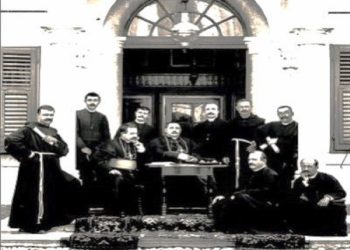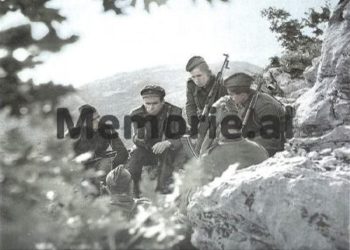By Enxhi Beka
Part two
-Kolë Kamsi, the intellectual who dedicated his life to education and scientific research-
Memorie.al / This paper will shed light on Kolë Kamsi, an intellectual who dedicated his life to education in Albania, about whom little has been written to date. The analysis of Kolë Kamsi’s figure will primarily be carried out through a comparative analysis of archival sources, media writings, and articles published about him. Born on September 23, 1886, in Shkodër, the father of three children – Paolini, Karlo, and Terezina Kamsi – with a social background as a small merchant and an educational profession, he made his contribution in the field of education and national culture. He was a scientific personality, folklorist, teacher and pedagogue of the Albanian language, compiler of school textbooks, translator, prose writer, fabulist, publicist, editor, and a distinguished researcher of the Albanian language and social traditions.
Continued from the previous issue
Career Progression and Institutional Roles
Kolë Kamsi continues: “I have presented my original translation to some, especially the thoughts in French and Italian.” During the years 1907-1928, he was a distinguished activist of the educational and cultural movement in Vlorë and a member of the society “Lidhja e arsimtarëve” (The Teachers’ League) of Vlorë.
During the years 1928-1936, he worked at the State Gymnasium in Shkodër in the role of a teacher, by order of the Ministry of Education, with a salary of 360 gold francs, and he did not leave until 1936. During the years 1936-1939, he was the director of the “Donika Kastrioti” Female Institute, at the Secondary School in Shkodër, by order of the Ministry of Education, reaching a salary of 400 gold francs.
During the years 1939-1940, he was at the “Nana e Skënderbeut” (Skanderbeg’s Mother) Institute, in the position of director in Tiranë, with a salary of 400 gold francs. In 1940, he was appointed by the Ministry of Education as a member of the Technical Commission for Textbook Drafting, and together with Aleksandër Xhuvani, Karl Gurakuqi, Ernest Koliqi, and Eqrem Çabej, he worked intensively on the drafting of Albanian language textbooks and anthologies of Albanian literature for state schools.
In 1940, he worked at the Institute of Albanian Studies, founded by Professor Ernest Koliqi, who served as the director of this institution, with Father Zef Valentini as secretary. This institution was created to develop scientific activity, involving researchers in language, literature, and art. Members of this institution included distinguished intellectuals such as: Aleksandër Xhuvani, Ekrem Vlora, Eqrem Çabej, Karl Gurakuqi, Kolë Kamsi, Lasgush Poradeci, Lazër Shantoja, Sotir Kolea, Vangjel Korça, etc. In 1942, this institution was named the Albanian Royal Institute and was directly supervised by the Prime Ministry.
Also by the Ministry of Education, in the years 1942-1945, Kamsi was appointed to the State Gymnasium in Shkodër. In 1944, the Institute of Studies was reorganized and named the Institute for Studies and Arts. Kamsi worked at this institution for the expansion of research fields and the number of Albanian researchers, now divided into three branches: linguistics, arts, and natural and technical sciences. Other well-known intellectuals of the time were also included in this institution, such as: Ali Asllani, Arshi Pipa, Hamdi Sulçebe, Hasan Dosti, Krist Maloki, Kristo Floqi, Ndoc Nikaj, Mid’hat Frashëri, Odhise Paskali, Spiro Konda, Vasfi Samimi, Vedat Kokona, etc.
In the years 1945-1946, Kola was again appointed by the Ministry of Education as a teacher in Shkodër, at the State Gymnasium. From 1945-1947, he was again in Shkodër, in the position of teacher, and on July 1, 1945, at the State Lyceum, in the exact same position. The years 1947-1948 found him in the same profession at the State Gymnasium in his hometown. Continuing this trend, in 1948, he worked for a short time at the Institute of Studies in Tiranë, in the position of folklorist, as a collector and researcher.
In 1948, he was appointed in Tiranë at the Institute of Sciences, an institute that had inherited, besides the activity, the valuable Albanological archive and library of the Institute of Albanian Studies, founded by Professor Ernest Koliqi. In the minutes of the Second Meeting of the General Assembly of the Institute of Studies, held in the National Library hall in June 1948, the meeting was opened by Dr. Manol Konomi, who invited members to participate in discussions and proposals after the reports presented. Among the collaborators for the language and literature section, the name of Kolë Kamsi is highlighted.
In the years 1950-1955, he returned as a professor of language and literature at the Shkodër Gymnasium (now named “28 Nëntori” during the communist regime) and simultaneously a professor at the “Shejnaze Juka” pedagogical school. To honor this distinguished figure of Albanian culture, he was elected Candidate of Sciences in 1955. On September 2, 1957, the 2-year Higher Pedagogical Institute was founded in Shkodër, and Kamsi was appointed lecturer of folklore and Albanian language, in the Faculty of Language and History.
He continued his work in this institution, and simultaneously at the State Gymnasium, until February 25, 1960, the year he passed away at the age of 74, after contributing for 53 years to laying the foundations of Albanian national education. Also in this year, he gave a speech in the Shkodër cemetery on the occasion of the return of the remains of Luigj Gurakuqi.
Kolë Kamsi’s Last Words and Legacy
On February 24, 1960, one day before he closed his eyes forever, while lying in bed and handing over his life’s work, the Arbëresh-Albanian Dictionary, to Prof. Mahir Domi, he slowly said:
“I am dying peacefully. I kept the promise I made to the Institute of History and Linguistics!”
Kolë Kamsi had been tasked by the Institute of Linguistics and History in Tiranë with compiling the Arbëresh-Albanian Dictionary, but as his health condition deteriorated, he worked tirelessly day and night and now felt peaceful, as he managed to submit the work within the deadlines set by the Institute. However, even though completed and submitted within the deadlines set by this institution, the dictionary would “sleep” for forty consecutive years on the shelves of the Institute of Sciences in Tiranë. The publication of the dictionary was made possible in the year 2000, after an editing process by Professor Ferdinand Leka.
Kolë Kamsi’s 53-Year Career Summary
Here is how the 53-year journey in the field of education of the distinguished intellectual Kolë Kamsi would be briefly reflected:
1907-1915: Teacher of the Albanian language, in the Vlorë district;
1915-1916: Director of the first primary school for boys, in the Vlorë prefecture;
1916: Director and teacher of a short-term pedagogical course in Vlorë, for educators;
1917-1920: Teacher in the Vlorë district;
1907-1928: Member and activist of the “Labëria” club, where he stood out as an activist of the educational and cultural movement; “Lidhja e arsimtarëve” (The Teachers’ League) in Vlorë;
1920: Teacher at the Franciscan city school, Shkodër;
22.07.1922-03.08.1922: Delegate at the Second Educational Congress, Tiranë;
1922-1924: Teacher of Albanian language and literature, at the “28 Nëntori” Gymnasium, Shkodër;
1924: Director of the “Teuta” primary school, in Shkodër;
1925: Director and pedagogue of the pedagogical course for teachers, in the Korçë district;
1926: Director of the Commercial Secondary School in the Vlorë district and director of the dormitory, in Uji i Ftohtë (Vlorë);
1927: Appointed director of the Commercial Institute in the city of Vlorë;
1928-1936: Teacher at the State Gymnasium “28 Nëntori”, Shkodër;
1936: Director of the “Donika Kastrioti” Female Institute, Shkodër;
1937-1939: Teacher at the State Gymnasium, Shkodër;
1939: Director of the “Nënë e Skënderbeut” (Skanderbeg’s Mother) Female Institute, Tiranë;
1940: Member of the Technical Commission for Textbook Drafting at the Ministry of Education;
1940-1942: Member of the Institute of Albanian Studies, Tiranë;
1942: Director of the State Gymnasium “28 Nëntori”, Shkodër;
1944: Worked for a few months at the Institute of Studies, Tiranë;
1946-1947: Teacher of the Albanian language, at the unitary school of the city of Shkodër;
1948: Appointed in Tiranë, at the Institute of Sciences;
1950-1960: Returned as a professor of language and literature at the “28 Nëntori” Gymnasium, Shkodër, and a professor at the “Shejnaze Juka” pedagogical school.
1955: Elected Candidate of Sciences, at the Institute of Sciences, Tiranë;
1957-1960: Lecturer of folklore and Albanian language, at the 2-year Institute and simultaneously at the “28 Nëntori” Gymnasium.
Looking at this entire journey of the personality Kolë Kamsi, it would be meaningless to know the history of Albanian culture and education without the name of Kolë Kamsi. It would be meaningless or incomplete to know the history of folklore and culture, without the one who made the name of this history.
Kolë Kamsi’s Literary and Scientific Activity
Among the great contributions left by Kolë Kamsi were his works. As for Kolë Kamsi’s works, a multitude of them can be listed. Kamsi’s research-scientific activity spans a period of 50 years (1907-1960). His Albanological studies are noted in these aspects: linguistics, literature, folkloristics, and history.
In the field of Linguistics, he was distinguished by the work “Manual praktik i gjuhës shqipe” (Practical Manual of the Albanian Language), written in two languages, Italian and Albanian, on the grammatical structure of the Albanian language. It had three editions, in Zadar, Dalmatia, in 1930 and in Shkodër, in 1940 and 1941. Another undisputed contribution is the monographs “Jeta dhe vepra e Frang Bardhit” (The Life and Work of Frang Bardhi) and “Disa vërejtje gjuhësore mbi veprën e Pashko Babit” (Some Linguistic Observations on the Work of Pashko Babi).
Other work titles are those of Literary Creation. More specifically, Kamsi was the author of several poems for children, several educational stories, which in themselves were adaptations into Albanian of foreign writers. Among the Translations, we can mention those he made of Andersen, Lessing, the Brothers Grimm, Hugo, Boccaccio, Tolstoy, and many other names in world literature, bringing the masterpieces of this literature closer to the Albanian reader.
Regarding the field of History, Jup Kastrati singles out some of his works, such as: “Udhëtim i Skënderbeut në Romë” (Skanderbeg’s Journey to Rome), “Dita 28 Nëntori” (November 28th Day), “Kryengritja e Malësisë së Madhe” (The Uprising of Malësia e Madhe), another article is named “Fatosat e Traboinit” (The Heroes of Traboin), who were killed in the Albanian uprising of 1910-1911, and continuing with “Një letër Abdyl Frashërit” (A Letter to Abdyl Frashëri) and Francesco Crispi, and many other titles.
Kamsi published “Dokumenta të Agimit të Lirisë” (Documents of the Dawn of Freedom) on the occasion of the 25th anniversary of independence. This publication included memoranda, protests, petitions, and memorandums of Albanian colonies in Egypt, Romania, and Turkey, as well as articles sent by Albanian societies and clubs operating in emigration. Also, a large part of all literary documents that had been sent to the Great Powers for the recognition of Albania were included.
In the field of Journalism/Publicism, his publications are found in “Albania” of London, 1907, in “Kalendari Kombiar” (National Calendar) in Sofia, 1912, in “Përparimi” (Progress) in Shkodër, 1915. His writings would take place in the articles of Corriere della Puglie, with a special issue on Albania, in 1917, in “Kuvendi” (The Assembly) in Rome, 1919, “Edukata e re” (The New Education), 1950 in Tiranë.
His publications would be present in “Agimi i Shkodrës” (The Dawn of Shkodër), 1920, in “Dituria e Tiranës” (The Knowledge of Tiranë), 1928, and many others.
His masterpiece has been described as the “Arbëresh Dictionary”, which was published after 40 years. The dictionary has about 8,000 words and phrases drawn directly from the works of Arbëresh writers and from the popular poetry of the Arbëresh people of Italy. Karlo Kamsi states that this dictionary remained in manuscript form for 40 years at the Institute of Linguistics: “I found it in a warehouse with the help of Bahri Beci, who directed that institution at the time.”
Starting from 1907, Kolë Kamsi worked tirelessly on the phonetics, morphology, and especially the lexicon of the Arbëresh language. One day before he died, he handed over his life’s work and the best of his scientific creation, the Dictionary of the Arbëresh Dialect, to Prof. Mahir Domi in his bed at his home in Shkodër, on February 23, 1960, saying these words: “I am dying peacefully. I kept the promise I made to the Institute of Linguistics and Literature.” The dictionary has about 10,000 words and phrases drawn directly from the works of Arbëresh writers and from the popular poetry of the Albanians of Italy, starting from Matranga until today, meaning 1960.
The Arbëresh-Albanian Dictionary was published in 2000. Kamsi became known as a researcher with the monograph “Shqiptarët e Italisë” (Albanians of Italy). Every month, for every consecutive year, it was published in the periodical “Leka” in Shkodër, from 1934 to 1944.
In the field of Linguistics, he was distinguished by the work “Manual praktik i gjuhës shqipe” (Practical Manual of the Albanian Language), written in Italian and Albanian, on the grammatical structure of the Albanian language. Also important is his collaboration on Fluvio Cordignano’s Italian-Albanian Dictionary. For the Institute of Studies, in 1948, Kamsi edited the work “Material leksikor” (Lexical Material) collected in the Gjakovë area by Murat Paci, a former student of the State Gymnasium of Shkodër, who was killed by the fascists in 1943.
For the history of Albanian Literature, besides articles on Arbëresh writers, Kolë Kamsi published valuable works on Pashko Vasa, Filip Shiroka, Gjergj Fishta, Luigj Gurakuqi, Fan Noli, Justin Rrota, and many others. Also quite interesting are the articles on the figures of Ismail Qemali, Miss Edith Durham, and many other names.
Folkloristics is one of Kamsi’s most prominent genres. Specifically, he remains one of the best researchers of Albanian proverbs, with his work, “Goja e popullit tonë” (The Mouth of Our People). This book summarizes short popular sayings. In the field of his literary creation, some poems and stories for children should also be noted.
Selected Works
Briefly, some of the work titles are:
Kolë Kamsi, the primer “Jeta e re” (The New Life), printed in Bari, Italy, “La italiana” printing house, the first edition was reprinted and improved three times in Bari, at the same printing house, Vlorë, 1915, 72 pages.
Kolë Kamsi, “Lulet e mendimit” (Flowers of Thought), anthology of verses collected for primary schools, published in Italy, Vlorë, 1917, 52 pages.
Kolë Kamsi, “Mësime përmbi natyrën” (Lessons on Nature), adapted according to the science curriculum for primary schools, published in Italy, Vlorë, 1919, 60 pages.
Kolë Kamsi, “Manuale practico della lingua albanese” (Practical Manual of the Albanian Language), Zara, 1930, reprinted in 1940, 1942, 224 pages.
Kolë Kamsi, co-author with Ndue Paluca and Ernest Koliqi, “Shkollë e jetë” (School and Life), Volume I, anthology for secondary schools, state texts, “Ora” publishing house, Shkodër, 1935, 288 pages.
Kolë Kamsi, co-author with Karl Gurakuqi, “Te praku i jetës” (At the Threshold of Life), reading book for the first and second grades of secondary school, state texts, Tiranë, 1940, reprinted in 1942, 449 pages.
Kolë Kamsi, co-author with Karl Gurakuqi, “Rreze drite” (Rays of Light), for the third and fourth grades of secondary school, state texts, Tiranë, 1941, 538 pages.
“Visaret e kombit” (Treasures of the Nation), Volume IX, folklore, compilation of customs and popular language, published in the magazine “Leka”, collected by Kolë Kamsi, Ministry of Education publication no. 9, printed at the “Zoja e papërlyeme” (Immaculate Lady) printing house, 1943, 192 pages.
“Bota shqiptare” (The Albanian World), anthology for the higher course of secondary school, collected under the care of Xhuvani, Kamsi, Çabej, Gurakuqi, Koliqi, Ministry of Education publication, anthology with 616 pages, state text for secondary schools, Tiranë, 1943.
“Shqiptarët shqiptarë” (The Albanians), Part II, Kamsi with Ernest Koliqi and Karl Gurakuqi, Ministry of Education publication, Tiranë, 1941. Memorie.al
Continues in the next issue





